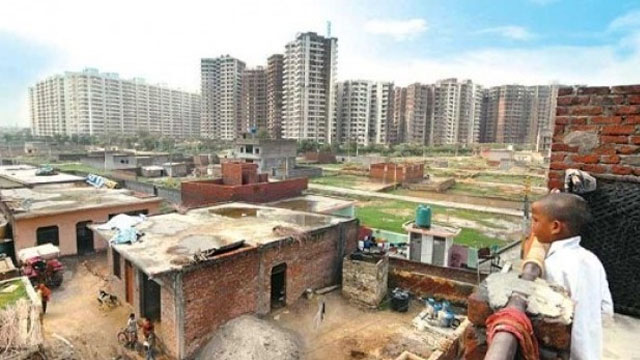The bill, which has been renamed as The Right to Fair Compensation and Transparency in Land Acquisition, Rehabilitation and Resettlement Bill, 2012, has already been passed by the Lok Sabha.
The much awaited land acquisition will be taken up for debate and voting in Rajya Sabha today.
The bill, which has been renamed “The Right to Fair Compensation and Transparency in Land Acquisition, Rehabilitation and Resettlement Bill, 2012”, has already been passed by the Lok Sabha on Aug 29 with 216 votes in favour and 19 against it.
Till now, India had to do about with the colonial era Land Acquisition Act dating back to 1894. The purpose of the original 1894 law was to merely expedite the acquisition of land. It will be replaced by the new bill when it becomes an act.
Here is all what you would like to know about the bill.
Features of the new bill
1.When land can be acquired: For private projects, public-private partnerships (PPPs) and for government projects, provided it is for a public purpose.
2.Retrospective effect: Where awards are made but no compensation has been paid or possession has not been taken, compensation shall be paid at the rate prescribed under the new Act. Where the award has not been made, the entire process shall be considered to have lapsed. Also, where acquisition took place five years prior to the commencement of the new law but no compensation has been paid/possession has taken place, the proceedings shall be deemed to have lapsed.
3.Consent: For a private entity or a PPP project, state has to conduct a social impact assessment (SIA) and an environmental impact assessment (EIA), to identify the families who would be affected if land was acquired. The private entity seeking land must then get the consent of 80 per cent of the affected families before it gets the government to acquire land for it. In the case of PPPs, the entity has to secure consent of 70 per cent of affected families. The third condition for getting possession of land acquired through state intervention is payment of compensation and fulfilling of R&R requirements.
4.Compensation: The Bill proposes payment of compensation up to four times the market value in rural areas and twice the market value in urban areas. Importantly, for the first time the bill also provides compensation to those who are dependent on the land being acquired for their livelihood, besides owners of the land. Also, where acquired land is sold to a third party for a higher price, 40 per cent of the appreciated land value (or profit) will be shared with the original owners. This would be exempt from tax and stamp duty.
5. R&R:
a.This is the very first law that links land acquisition and the accompanying obligations for resettlement and rehabilitation.
b.The definition of affected family includes farm labourers, tenants, sharecroppers and workers in the area for three years prior to acquisition.
c.The compensation would be Rs 5 lakh or a job, if available, to the affected family; subsistence allowance of Rs 3,000 a month for one year; miscellaneous allowances of up to Rs 1.25 lakh for each family. These are obviously separate from the onetime payment to the land-owner.
d.In every project those losing land and belonging to the SC or ST will be provided land equivalent to land acquired or two and a one-half acres, whichever is lower. Where the affected families belonging to the SC and the ST are relocated outside of the district then they shall be paid an additional rehabilitation and resettlement benefits to which they are entitled in monetary terms along with a one-time entitlement of fifty thousand rupees.
6.Choice for return to Land Bank or owner: Where unutilised land is returned, the State can decide whether it goes to the original owner or the Land Bank.
7.Threshold for private purchase left to government: While the Bill requires the discharge of obligations related to Resettlement and Rehabilitation even in the case of private purchase, provided the purchase exceeds a certain threshold, it leaves the said threshold to the discretion of the State governments.
8.Multi-crop acquisition: The acquisition of agricultural and multi-crop land has to be done only as a last resort. There will be definite restrictions on the extent of acquisition of such land to be determined by the States concerned.
9.Dispute authority: A Land Acquisition and Rehabilitation and Resettlement Authority to be established.
10.Only a baseline: The Bill only provides the baseline for compensation and has devised a sliding scale which allows States to fix the multiplier (which will determine the final award) depending on distance from urban centres. Moreover, The State governments are free to enact any law to enhance or add to the entitlements enumerated under the Bill, conferring higher compensation than what is payable under the Bill or making provisions for better rehabilitation and resettlement.
Criticism
1.It is not clear how the value of rural land located close to designated urban areas will be realistically determined.
2.No guarantee of jobs in R&R package
3.State government to decide if unused acquired-land should be returned to the farmer or added to its land bank. This applies even if owners return the compensation
4.Though the multicrop irrigated farmland is out of acquisition ambit for non-farm uses. But state can decide to what extent farmland should be protected. The farmer does not have any say in the matter.





